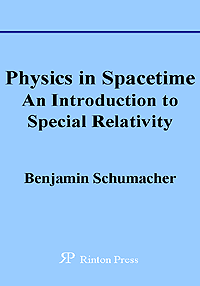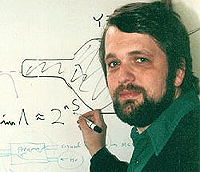|
 
This book is an introduction to special relativity for
undergraduates in physics and mathematics. It is shaped
by two convictions: (1) Relativity is not a "side issue"
or "special topic". Rather, it is an essential unifying
idea that illuminates every branch of physics. (2) The
best way to teach relativity is to adopt a "spacetime"
point of view from the start. A physical situation may
appear different to different observers, but every
observer must see the same four-dimensional spacetime.
Beginning with an introduction to spacetime ideas and
basic relativistic effects, the book moves on to
four-vectors, frames of reference, energy and momentum,
and the spacetime description of waves. The second half
of the book, written at a somewhat higher mathematical
level, discusses relativistic forces, tensors, the
physics of continuous systems such as fluids, and the
electromagnetic field. Three appendices give a review of
vector algebra and calculus, provide an historical
account of the development of relativity, and describe
the "kernel-index" notation used in advanced texts on
special and general relativity.
The book should be accessible to students who have
completed a calculus-based introductory physics course.
It may be used as the main text for a semester-long
course on special relativity, or as a supplemental text
in courses on modern physics, mechanics,
electromagnetism, or general relativity. |

 Benjamin
Schumacher began his
theoretical physics career as a student of relativity
pioneer John Archibald Wheeler, doing research on black
hole thermodynamics. He is best known for his
fundamental contributions to quantum information theory,
for which he received the 2002 Quantum Communications
Award (the premier international prize in the field). He
has been a Rosenbaum Fellow at the Isaac Newton
Institute of Cambridge University and a Moore
Distinguished Scholar at Caltech. At present he is
Professor of Physics at Kenyon College, where he has
been on the faculty since 1988. Benjamin
Schumacher began his
theoretical physics career as a student of relativity
pioneer John Archibald Wheeler, doing research on black
hole thermodynamics. He is best known for his
fundamental contributions to quantum information theory,
for which he received the 2002 Quantum Communications
Award (the premier international prize in the field). He
has been a Rosenbaum Fellow at the Isaac Newton
Institute of Cambridge University and a Moore
Distinguished Scholar at Caltech. At present he is
Professor of Physics at Kenyon College, where he has
been on the faculty since 1988.
|

